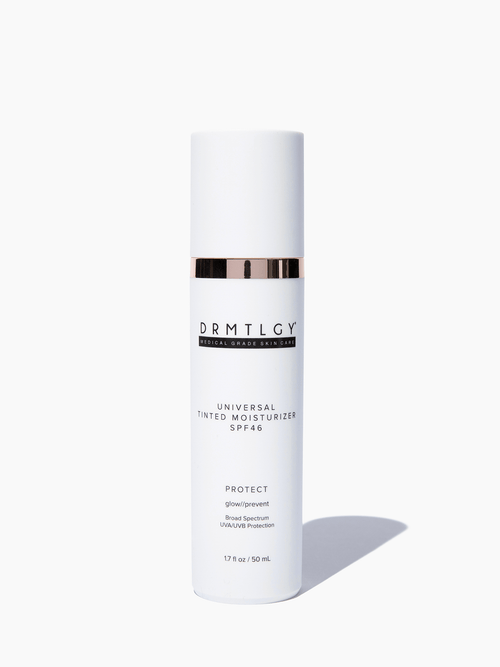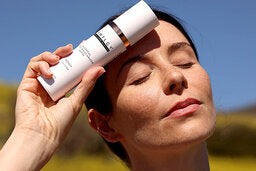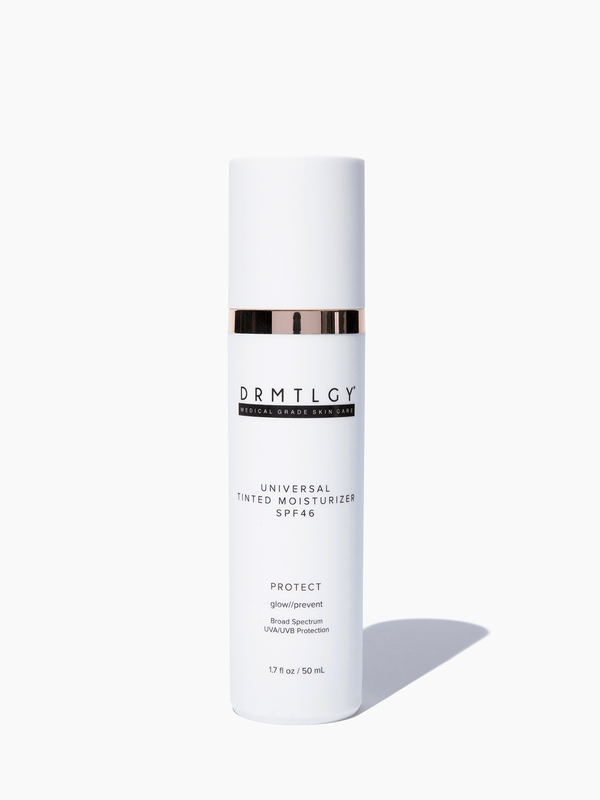
The buzz surrounding retinoids has been going on for some time now. “Retinoids” is the all-encompassing term that describes a large family of ingredients. They have been advertised to even out skin tone, help treat acne and scarring, combat fine lines and wrinkles, boost collagen growth, battle hyperpigmentation, and more. But can any single ingredient actually be that beneficial? When it comes to retinoids, study after study has found that the answer is yes.
First, what are retinoids?
Retinoids are chemical compounds derived from vitamin A. Their four most common forms are Retinyl, Retinol, Retinaldehye, and Tretinoin (retinoic acid). Decades ago, Tretinoin became the first FDA approved retinoid for acne treatments under the brand name Retin-A. In the years following, dermatologists noticed how universally effective the treatment was—not just for acne, but for filling out wrinkles and lines, and creating brighter, healthier looking skin. Retin-A must be prescribed by a dermatologist or physician, while retinol can be used in over-the-counter products.

Retin-A is approximately 100 times stronger than most over-the-counter retinol creams, which greatly increases the chance of experiencing side effects. Retinol creams, on the other hand, are far gentler on the skin, which makes for slower results, but also greatly reduces the risk of side effects.
How does retinol work?
Retinoids truly are a miracle drug. Since the 1970s, retinol creams have been shown to enhance skin’s elasticity, minimize the appearance of fine lines and wrinkles, prevent collagen from breaking down, and reverse dark spots and sun spots. Impressive, right? Retinoids work by causing outer skin cells to quickly die, making it easier for new cells below to grow. By rapidly killing off the older, weaker skin cells, healthy new cells rise to the surface and thrive, making for visibly younger, brighter skin.
One of the most common misconceptions is that because retinoids work to kill off old skin cells, they’re thinning your skin. Initially, retinoids (particularly Tretinoin) can cause redness and peeling, as new cells begin to form at the surface, but as those budding cells become healthy and more mature, your skin will actually become thicker. With the formation of a healthier cellular structure at the dermis, skin tone will even out, essentially reversing the effects of common issues like dark spots and hyperpigmentation.
How to use retinol
As we said earlier, retinol is not nearly as intensive a treatment as tretinoin, but it can certainly still cause some redness and peeling when you first start using it. Here are a few basic guidelines to ensure that your retinol application is both safe and efficacious:
Start slow:
Most of us experience some sort of irritation when we first start using a retinoid, so at the beginning, only apply it once every couple of days, and use it sparingly: ¼ teaspoon worth is all it takes. The initial irritation should deplete after a few days of use, and after a few weeks, your skin will be noticeably stronger and firmer.
Avoid the sun:
This can be hard to do, especially in the summer months, but because retinol is clearing off the top layer of skin, you’re more vulnerable than usual to sun damage. Always remember to wear sunscreen, and while using retinol we highly recommend a hat wide enough to shade your face.
Apply it on clean skin:
Use a gentle cleanser to ensure that your face is clean. Once your skin has completely dried, apply a pea-sized amount of retinol and gently massage it into your skin. Afterwards, apply a moisturizer to help soothe the skin, and in the mornings, always remember to apply sunscreen for maximum protection.
If you are using a prescription (like Retin-A) please consult your dermatologist or physician and follow his/her exact guidelines for usage and application.
How long does it take to work?
If you’re looking for a quick fix, you’ve probably realized by now that retinoids are not your answer. On average, over the counter retinol creams take between 3 to 10 weeks to start really working. That may sound like a long time to wait for results, but they’re essentially creating long-term solutions for your skin. Continued use of retinol helps sustain the reduction of fine lines and wrinkles and helps to normalize the overall physiology of the skin.
Antioxidants (Basel), January 2018, Online Publication
Archives of Dermatology, May 2007, pages 606-912
Clinical Interventions in Aging, December 2006, Online Publication
Journal of Cosmetic Dermatology, March 2016, pages 47-59













